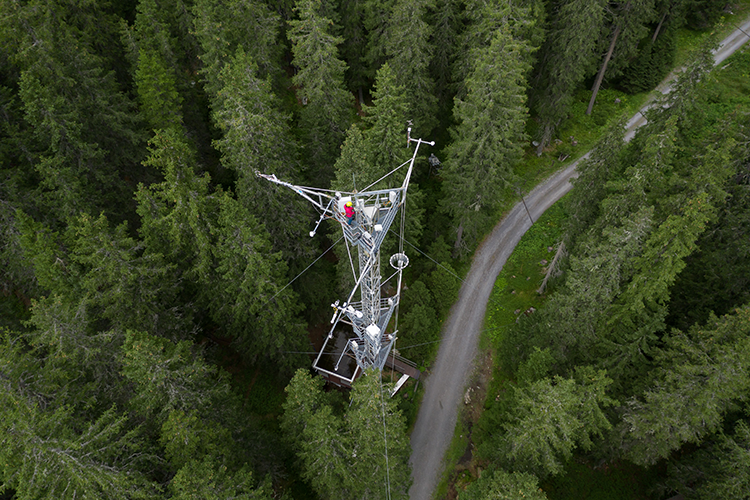
It was a bitterly cold day in January when a film team from ETH Zurich visited the ICOS measuring station in Davos. Their short film shows the station, but also the people who work there on the ground, within the forest canopy, and on the 35- metre measuring tower. CO2 flux measurements in Davos are performed since 1997, which makes it one of the oldest flux sites globally. Mana Gharun was responsible for the station as Principal Investigator from 2019 to 2022.
Mana Gharun, you were involved with the CO2 flux measurements in Davos for over three years. What was your task as Principal Investigator at the measurement station?
As site PI I was in charge of making sure all data collection is running smoothly. I analysed and interpreted measurements, communicated results with the scientific community, facilitated collaboration and project development, remained active in national and cross-national initiatives, and lead site visits for outreach and education purposes. The PI collaborates closely with all members of the station team to make sure these tasks are completed properly.
It is with sites like Davos that we can push the boundary climatic and site conditions in our observations and provide more robust nature-based solutions to climate change.
What do you think is the significance of the data collected in Davos for the European research community?
Measurements in Davos are significant for many reasons. The site is a unique observation point in the cohort of flux sites across Europe due to its high altitude and low winter temperatures, and we observe a spruce forest in its natural habitat, and not planted in the lowlands. It is with sites like Davos that we can push the boundary climatic and site conditions in our observations and provide more robust nature-based solutions to climate change.
Film by Artan Hajrullahu and Sophie Graf (ETH Zurich), with footage taken in summer by Matthias Paintner
What does the ICOS label mean to the project?
ICOS means harmonized and standardized observations, and the label means that the greenhouse gas measurements are collected with the highest quality and following protocols that have been tested, agreed on, and established by the scientific community over the last decades.
You are now a junior professor in biosphere-atmosphere interaction at the faculty of Geosciences at the University of Münster, Germany. What do you take away from the time working in Davos?
The project was an excellent opportunity to work in a large consortium with active members from all over Europe, and to develop collaboration and friendship with many excellent scientists and leaders in the field. Davos is a site of research but also a site of teaching and exciting cooperation which I will continue to include in my future teaching and research program. What I take from my time in Davos is the understanding of many challenges and rewards in ecosystem greenhouse gas measurements, and certainly the recognition of the value that lies in collecting high-quality long-term observations within a larger network.
This article was first published by ICOS Switzerland by its National Focal Point ETH Zurich.